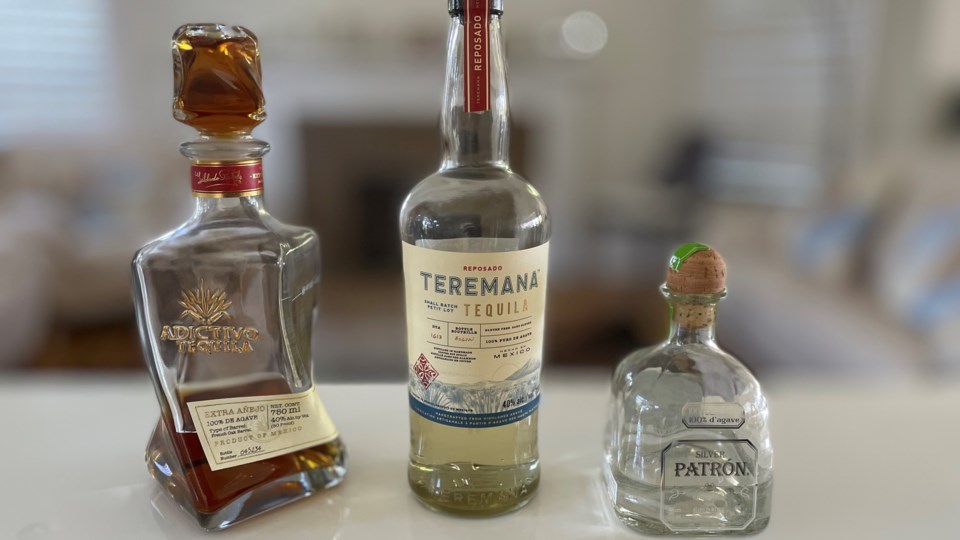My interest in tequila was sparked by a friend telling me that Dwayne “The Rock” Johnson had just produced a tequila. Obviously, I needed to get a bottle of this tequila and I was fortunate enough to purchase a bottle before it was sold out at the liquor stores. I had previously thought that all tequila was by and large similar, but as I did more research and tasting, I found out that tequila is a more diverse and interesting spirit than I had previously thought.
Tequila is produced by fermenting and then distilling sugars from the blue agave plant. When looking for quality tequila, it is important to look for a product with the words “100% blue agave” on the bottle. If it does not say this, or just uses the words blue agave, then up to 49 per cent of other sugar products have been used to distill the tequila, which results in a lower quality product.
Most of us are familiar with tequila like Patron Silver, which is a blanco tequila. This type of tequila has either no or very little (up to 2 months) oak aging and is the purest form of tequila. It is also the type of tequila that will give you the most “burn” and for this reason, it is used in mixed drinks and when you want a shot of tequila.
The next level up in tequila is reposado or rested tequilas. A good example of this type of tequila is The Rock’s new tequila called Teremana (they also make a blanco). A reposado tequila has been aged between 2-12 months in oak barrels. They may be darker in colour than blanco tequila because of this aging. Reposado tequilas are well balanced and smoother than blanco tequilas, and definitely should not be used for mixed drinks or in shots. They are a good balance between the purity of blanco tequilas and the smoothness of anejo tequilas.
Both blanco and reposado tequilas should pair nicely with Mexican or seafood dishes. Blanco will go well with anything that has a citrus or lime element, like fish tacos or ceviche, while reposados have a little more balance, so they can pair well with more flavorful or spicy dishes. Try reposados with steak or pulled pork.
Then we come to anejo and extra anejo tequilas. Anejo tequilas are aged in small oak barrels for one to three years, while extra anejo tequilas are aged in oak barrels for a minimum of 3 years. Because of the aging, they are generally the most expensive tequilas and amber in color. The extended barrel aging imparts vanilla and caramel characteristics that many people would not associate with tequila. A good example of this is the Adictivo Extra Anejo Tequila, which has been aged in oak for 7 years. To me, this tequila almost has the sweetness of rum and can be compared to a fine scotch. It has none of the burn associated with blanco tequila, so I would have these tequilas after a meal, much like a fine spirit or port. Some almonds or grapes might be a great light accompaniment to these tequilas, or you could try them with churros in dark chocolate sauce.
Our B.C. Liquor Stores have a fairly good selection of tequila products at all different price levels. Which one you prefer depends on personal preference, but it is fascinating to me that tequila is not uniform and has so many different taste profiles.
For my review of the three tequilas that I mentioned above, please see my YouTube Channel.
Until next time, happy drinking!
Tony Kwan is a lifestyle writer. Lawyer by day, food and wine lover by night, Tony aims to give you an insider’s guide to the best that life has to offer.



